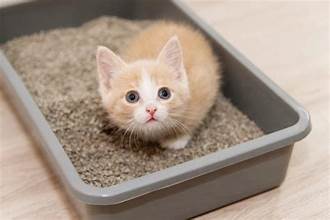As a new kitten owner, you have a tremendous responsibility. Litter box training is a massive part of a kitten’s growth.
Here’s a guide to get you started:
Supplies:
Litter box:
Choose a box large enough for your kitten to turn around comfortably and cozy enough to provide a secure space for them. Remember, your kitten’s comfort is paramount. Kittens prefer open boxes over hooded ones, but this can vary by cat. Kittens may do better with a shallow box until they grow bigger.
Litter:
Select a kitten-safe litter that is unscented and clumping. The clumping feature makes it a breeze to clean up, reducing your workload. Avoid litters with strong fragrances, as these can irritate kittens’ noses.
Scoop:
Invest in a litter scoop to remove waste from the box daily.
Location:
It’s crucial to pick a quiet, easily accessible location for the litter box. Kittens, like humans, prefer privacy when they are eliminated. A quiet location can help your kitten feel more comfortable and secure during this vulnerable time. Avoid high-traffic areas or places where the litter box will be next to noisy appliances.
Setting up the litter box:
When placing the litter box, be sure it’s in a quiet place away from your kitten’s food and water bowls. Remember, kittens prefer to use a different bathroom than where they eat. Avoid high-traffic areas or places where it will be next to noisy appliances. Only put a few inches of litter, ensuring a suitable depth that provides a comfortable and practical environment for your kitten’s bathroom needs. Remember to keep the litter box clean. Scoop out the waste daily and thoroughly change the litter every 1-2 weeks.
Training your kitten:
Introduce the litter box:
Place it in the chosen location and let your kitten embark on a delightful exploration. This is a joyful part of the training process. You can even place a few treats inside the box to create a positive association, adding to the excitement of the discovery.
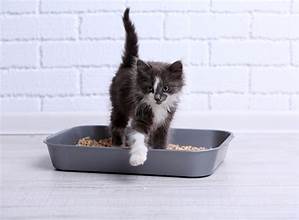
Watch for elimination cues:
Look for clues your kitten may need to use the litter box, such as squatting or scratching the floor. These are common signs that your kitten needs to eliminate. Other signs may include sniffing the ground, circling, or meowing. Kittens must be eliminated after eating, waking up from sleep, or playing. After these activities, gently place your kitten in the litter box.
Positive reinforcement
When your kitten uses the litter box correctly, it’s a big step! Praise it verbally and offer a treat. Positive reinforcement is a powerful tool in training your kitten. It helps your kitten associate use the litter box with positive rewards, making the training process more enjoyable for both of you. This can also strengthen the bond between you and your kitten, creating a positive association with the litter box and the training process.
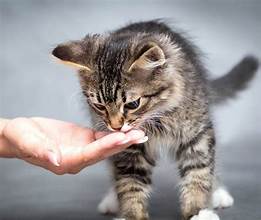
Patience and consistency:
Accidents are common during litter box training, so don’t worry if it happens. Avoid punishment, as this can make the process more stressful for your kitten. If your kitten eliminates outside the box, calmly clean up the mess with an enzymatic cleaner that removes odors and doesn’t react.
Cleanliness:
To keep the litter box clean and inviting for your kitten, scoop it daily and completely change it every week.
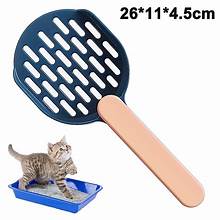
Patience is key:
Litter box training takes time and patience. Be consistent with your routine and positive in your reinforcement. Most kittens will be litter box trained within a few weeks.
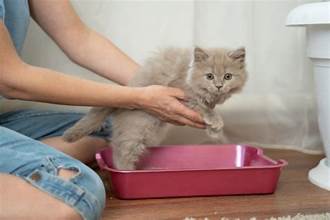
It’s important to note that kittens typically use litter boxes around 3-4 weeks of age, which can guide your expectations and training approach.
Accidents happen, especially during the learning process. Don’t punish your kitten if you find an accident outside the litter box. Clean the area with a cleaning product like

ANGRY ORANGE Pet Odor Eliminator is a cleaning product that helps remove odors from the area where your kitten has had an accident. This can help prevent your kitten from returning to that spot to eliminate again.

Additional tips:
Should your kitten consistently eliminate outside the litter box, it’s crucial to consult your veterinarian. This step is essential to rule out any potential underlying medical issues, ensuring the health and well-being of your pet.
Some kittens may take longer to litter train than others. I am being patient and consistent with your training routine.
With positive reinforcement and patience, your kitten should be using the litter box consistently in no time.
Some kittens prefer a covered litter box, while others feel more comfortable with an open box. Experiment to see what your kitten prefers.
With patience and consistency, your kitten should be litter box trained in no time
Here are some additional resources that you might find helpful:
The Kitten Lady:https://www.petmd.com/cat/general-health/how-to-litter-train-kitten
PetMD:https://www.vetstreet.com/our-pet-experts/how-to-teach-your-kitten-to-use-a-litterbox
Disclosure: This blog contains some affiliate links to Amazon. I might receive a commission if you follow them and purchase anything from the recommended products. I use Amazon for all of my pet products, and I can assure you that I never recommend anything I don’t trust. Thanks for supporting positvelypets.com!

